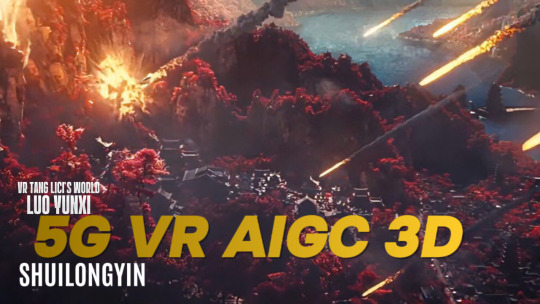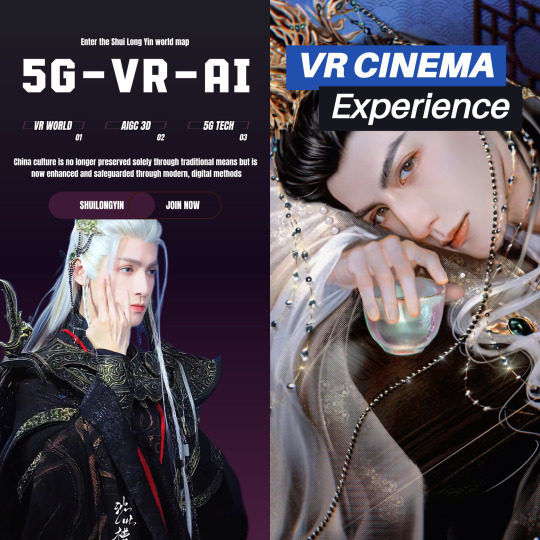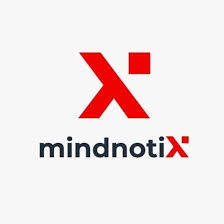#Ar vr service providers
Explore tagged Tumblr posts
Text
In a world where technology is evolving at a rapid pace, augmented reality (AR) is one of the most transformative innovations. AR blends the digital and physical worlds, creating immersive experiences that have the potential to revolutionise industries. India, with its growing tech ecosystem, has become a hub for AR development, and leading companies in this space include Simulanis Solutions.
#AR Companies in India#Best AR Development Companies India#Augmented Reality Solutions India#AR App Development India#AR Content Creation India#AR Technology Providers India#AR for Business India#AR for Education India#AR for Retail India#Interactive AR Solutions India#AR Startups India#AR Marketing Solutions India#Custom AR Development India#AR for Healthcare India#Augmented Reality Services India#AR Real Estate Solutions India#AR for E-commerce India#AR Game Development India#Enterprise AR Solutions India#AR/VR Companies India
0 notes
Text
Unlock the Future of Immersive Experiences with AR/VR Development Services
At Atcuality, we bring the future of digital experiences to life with our cutting-edge AR/VR development services. Our team of experts specializes in creating customized augmented and virtual reality solutions that elevate your brand and engage your audience like never before. Whether you’re looking to build interactive virtual environments, enhance customer experiences, or revolutionize training methods, we tailor each project to meet your unique business needs. Our AR/VR solutions are designed to seamlessly integrate into various industries, from gaming and entertainment to education, real estate, and healthcare. By choosing Atcuality’s AR/VR development services, you gain access to the latest technology and innovation that provides your users with an immersive and unforgettable experience. We focus on quality and precision to ensure that your augmented and virtual reality solutions are not only visually stunning but also highly functional and effective in achieving your business goals. Elevate your business with the power of AR/VR technology. Explore how we can help you bring your vision to life with our tailored AR/VR solutions.
#seo services#seo agency#seo marketing#digital marketing#ppcadvertising#seo company#web development#web design#web developers#web developing company#website developer near me#website development#website developers#ar vr technology#game design#game development#game developers#artificial intelligence#machine learning#amazon web services#android app development#android application development#azure cloud services#azure cloud computing#azure cloud migration#blockchain#cloud security#cloud services#cloud service provider#cloud server hosting
1 note
·
View note
Text
Augmented and Virtual Reality Services | AR/VR
VR (Virtual Reality) and AR (Augmented Reality) technologies revolutionise industries by creating immersive and interactive experiences. They enhance training, education, visualisation, and entertainment, unlocking new possibilities, fostering engagement, and transforming the way we perceive and interact with the digital world.
#augment reality services#virtual reality services#ar services company#vr services company#web development services providers
0 notes
Text
The Metaverse: A New Frontier in Digital Interaction

The concept of the metaverse has captivated the imagination of technologists, futurists, and businesses alike. Envisioned as a collective virtual shared space, the metaverse merges physical and digital realities, offering immersive experiences and unprecedented opportunities for interaction, commerce, and creativity. This article delves into the metaverse, its potential impact on various sectors, the technologies driving its development, and notable projects shaping this emerging landscape.
What is the Metaverse?
The metaverse is a digital universe that encompasses virtual and augmented reality, providing a persistent, shared, and interactive online environment. In the metaverse, users can create avatars, interact with others, attend virtual events, own virtual property, and engage in economic activities. Unlike traditional online experiences, the metaverse aims to replicate and enhance the real world, offering seamless integration of the physical and digital realms.
Key Components of the Metaverse
Virtual Worlds: Virtual worlds are digital environments where users can explore, interact, and create. Platforms like Decentraland, Sandbox, and VRChat offer expansive virtual spaces where users can build, socialize, and participate in various activities.
Augmented Reality (AR): AR overlays digital information onto the real world, enhancing user experiences through devices like smartphones and AR glasses. Examples include Pokémon GO and AR navigation apps that blend digital content with physical surroundings.
Virtual Reality (VR): VR provides immersive experiences through headsets that transport users to fully digital environments. Companies like Oculus, HTC Vive, and Sony PlayStation VR are leading the way in developing advanced VR hardware and software.
Blockchain Technology: Blockchain plays a crucial role in the metaverse by enabling decentralized ownership, digital scarcity, and secure transactions. NFTs (Non-Fungible Tokens) and cryptocurrencies are integral to the metaverse economy, allowing users to buy, sell, and trade virtual assets.
Digital Economy: The metaverse features a robust digital economy where users can earn, spend, and invest in virtual goods and services. Virtual real estate, digital art, and in-game items are examples of assets that hold real-world value within the metaverse.
Potential Impact of the Metaverse
Social Interaction: The metaverse offers new ways for people to connect and interact, transcending geographical boundaries. Virtual events, social spaces, and collaborative environments provide opportunities for meaningful engagement and community building.
Entertainment and Gaming: The entertainment and gaming industries are poised to benefit significantly from the metaverse. Immersive games, virtual concerts, and interactive storytelling experiences offer new dimensions of engagement and creativity.
Education and Training: The metaverse has the potential to revolutionize education and training by providing immersive, interactive learning environments. Virtual classrooms, simulations, and collaborative projects can enhance educational outcomes and accessibility.
Commerce and Retail: Virtual shopping experiences and digital marketplaces enable businesses to reach global audiences in innovative ways. Brands can create virtual storefronts, offer unique digital products, and engage customers through immersive experiences.
Work and Collaboration: The metaverse can transform the future of work by providing virtual offices, meeting spaces, and collaborative tools. Remote work and global collaboration become more seamless and engaging in a fully digital environment.
Technologies Driving the Metaverse
5G Connectivity: High-speed, low-latency 5G networks are essential for delivering seamless and responsive metaverse experiences. Enhanced connectivity enables real-time interactions and high-quality streaming of immersive content.
Advanced Graphics and Computing: Powerful graphics processing units (GPUs) and cloud computing resources are crucial for rendering detailed virtual environments and supporting large-scale metaverse platforms.
Artificial Intelligence (AI): AI enhances the metaverse by enabling realistic avatars, intelligent virtual assistants, and dynamic content generation. AI-driven algorithms can personalize experiences and optimize virtual interactions.
Wearable Technology: Wearable devices, such as VR headsets, AR glasses, and haptic feedback suits, provide users with immersive and interactive experiences. Advancements in wearable technology are critical for enhancing the metaverse experience.
Notable Metaverse Projects
Decentraland: Decentraland is a decentralized virtual world where users can buy, sell, and develop virtual real estate as NFTs. The platform offers a wide range of experiences, from gaming and socializing to virtual commerce and education.
Sandbox: Sandbox is a virtual world that allows users to create, own, and monetize their gaming experiences using blockchain technology. The platform's user-generated content and virtual real estate model have attracted a vibrant community of creators and players.
Facebook's Meta: Facebook's rebranding to Meta underscores its commitment to building the metaverse. Meta aims to create interconnected virtual spaces for social interaction, work, and entertainment, leveraging its existing social media infrastructure.
Roblox: Roblox is an online platform that enables users to create and play games developed by other users. With its extensive user-generated content and virtual economy, Roblox exemplifies the potential of the metaverse in gaming and social interaction.
Sexy Meme Coin (SEXXXY): Sexy Meme Coin integrates metaverse elements by offering a decentralized marketplace for buying, selling, and trading memes as NFTs. This unique approach combines humor, creativity, and digital ownership, adding a distinct flavor to the metaverse landscape. Learn more about Sexy Meme Coin at Sexy Meme Coin.
The Future of the Metaverse
The metaverse is still in its early stages, but its potential to reshape digital interaction is immense. As technology advances and more industries explore its possibilities, the metaverse is likely to become an integral part of our daily lives. Collaboration between technology providers, content creators, and businesses will drive the development of the metaverse, creating new opportunities for innovation and growth.
Conclusion
The metaverse represents a new frontier in digital interaction, offering immersive and interconnected experiences that bridge the physical and digital worlds. With its potential to transform social interaction, entertainment, education, commerce, and work, the metaverse is poised to revolutionize various aspects of our lives. Notable projects like Decentraland, Sandbox, Meta, Roblox, and Sexy Meme Coin are at the forefront of this transformation, showcasing the diverse possibilities within this emerging digital universe.
For those interested in the playful and innovative side of the metaverse, Sexy Meme Coin offers a unique and entertaining platform. Visit Sexy Meme Coin to explore this exciting project and join the community.
272 notes
·
View notes
Text
Shui Long Yin VR Metaverse: Technologies and Digital Assets, and the melon about it being released in Summer 2025

What is the metaverse?
The Shui Long Yin metaverse is a parallel world closely resembling the real world, built through the use of digital modelling and technologies such as VR and AR, and designed to exist permanently.
This virtual realm integrates cutting-edge advancements, including blockchain, augmented reality, 5G, big data, artificial intelligence, and 3D engines.
When you acquire a ticket to this world, you gain a digital asset, allowing you to become an immersive citizen within the Shui Long Yin Metaverse.
Every item within Shui Long Yin can be experienced through Augmented Reality using VR devices, providing a seamless blend of the physical and digital realms. These digital assets are permanent, and in some cases, overseas users may trade or transfer their tickets to enter the Shui Long Yin world.

What is VR and AR?
Virtual Reality (VR) is a technology that enables users to interact within a computer-simulated environment.
Augmented Reality (AR), on the other hand, combines elements of VR by merging the real world with computer-generated simulations. A well-known example of AR is the popular game Pokémon Go, where virtual objects are integrated into real-world surroundings.

Tang LiCi's universe
The Shui Long Yin film crew has digitally modeled the core art assets, 50 000 square meters.

What technologies does China Mobile & Migu bring to the table?
China Mobile served as the lead organizer for the 2023 World VR Industry Conference. Its subsidiary, Migu, has also been dedicated to advancing projects in this area.
Shui Long Yin is their first priority this summer 2025.
5G+AI: VR world in Metaverse
AIGC AR 3D: Using AI technology in graphics computer, with the best trained AI system in China.
Video ringtones as a globally pioneering service introduced by China Mobile.

Shui Long Yin from Screen to Metaverse to Real Life: Epic Battles and Intricate Plotlines
The United States and China are world pioneers in the development of TV drama integration VR Metaverse. Notably, Shui Long Yin is the sixth TV drama map worldwide to be merged into the Metaverse.
How can we enjoy these technologies?
-- First we need 5G -- According to a report by the Global Mobile Suppliers Association (GSA), by June 2022:
》There are 70 countries around the world had active 5G networks, you can fully experience all the technology featured in Shui Long Yin.
Example: South Korea, China, and the United States have been at the forefront. Follow after are Japan, United Kingdom, Switzerland, Australia, Taiwan, United Arab Emirates, Saudi Arabia, Viet Nam...
》No worries—even in countries without 5G, you can still watch the drama and enjoy AIGC and 3D technology through the streaming platforms Migu Video and Mango.
•Mango available on IOS and Android, Harmony OS
•Migu (Mobile HD) soon availabe on IOS and Android, Harmony OS
-- Second, we need VR devices --
In country where VR is already commonplace, such as the United States, owning a VR device is considered entirely normal. Users can select devices that best suit their preferred forms of home entertainment.
European countries have also become fairly familiar with VR technology.
However, it is still relatively new to many parts of Asia. When choosing a VR device, it’s important to select one that is most compatible with your intended activities, whether that’s gaming, watching movies, or working.

It's no surprise to us that the drama Shui Long Yin will be released in the summer 2025, but it will also be coinciding with offline tourism to Long Yin Town in Chengdu, online VR Metaverse travel, and 3D experiences on the new streaming platforms Migu and Mango. Stay tuned!
Tv drama: SHUI LONG YIN Shui Long Yin & Leo All music and image are copyrighted and belong to the respective owners, included the official film crew SHUILONGYIN.
#shui long yin#tang lici#水龙吟#唐俪辞#luo yunxi#luo yun xi#leo luo#罗云熙#cdrama#chinese drama#long yin town#long yin town vr
5 notes
·
View notes
Text
The Future of Social Media
The Future of Social Media: Trends and Innovations Shaping the Digital Landscape
Social media has transformed how we communicate, shop, and consume information. With over 5 billion social media users globally, platforms like Facebook, Instagram, TikTok, and LinkedIn have become integral to our daily lives. But as technology evolves, social media is poised for even more significant changes. Let’s explore the future of social media, the key trends shaping its growth, and what businesses and users can expect in the coming years.
1. Rise of AI and Automation
Artificial Intelligence (AI) is set to revolutionize social media by personalizing user experiences and automating content creation. ✅ AI-Driven Content: Platforms will use AI to create and suggest highly relevant content based on user behavior. ✅ Chatbots and Customer Service: AI-powered chatbots will provide instant responses and customer support. ✅ Enhanced Algorithm Efficiency: AI will refine algorithms to boost content visibility and engagement.
👉 Example: TikTok’s AI-based algorithm curates content precisely to user preferences, keeping users engaged for longer periods.
2. Growth of Short-Form Video Content
Short-form videos have become the preferred content format, thanks to platforms like TikTok, Instagram Reels, and YouTube Shorts. ✅ Higher Engagement: Short videos have higher engagement rates due to their fast-paced and interactive nature. ✅ Monetization Opportunities: Platforms are introducing more ways for creators to earn through video content. ✅ Live Streaming: Live videos drive real-time engagement and foster a stronger connection with audiences.
👉 Example: Instagram Reels and YouTube Shorts have gained massive traction, encouraging brands to shift to short-form content.
3. Expansion of Social Commerce
Social media is no longer just for networking—it’s becoming a powerful e-commerce platform. ✅ Shoppable Posts: Platforms like Instagram and Pinterest allow users to buy products directly from posts. ✅ Influencer Marketing: Brands are investing heavily in influencer partnerships to drive sales. ✅ Livestream Shopping: Real-time product demonstrations and Q&A sessions boost consumer trust and conversions.
👉 Example: TikTok Shop and Instagram Checkout make it easy for users to purchase without leaving the app.
4. Rise of Decentralized Platforms
Concerns about data privacy and platform control have fueled the rise of decentralized social media. ✅ Blockchain Integration: Platforms using blockchain technology will offer greater transparency and user control. ✅ User-Owned Content: Decentralized networks will give users more control over their data and content. ✅ Reduced Censorship: Decentralization reduces the influence of large corporations on content moderation.
👉 Example: Platforms like Mastodon and Bluesky are gaining attention for their decentralized, user-driven models.
5. Influence of Virtual and Augmented Reality (VR & AR)
The Metaverse is driving the integration of VR and AR into social media experiences. ✅ Virtual Meetups: Users will engage in virtual hangouts and events using avatars. ✅ AR Filters and Lenses: Enhanced AR features will create more immersive and interactive content. ✅ Virtual Stores: Brands will launch virtual showrooms where users can explore products in 3D.
👉 Example: Snapchat’s AR lenses and Meta’s Horizon Worlds are early examples of this shift.
6. Increasing Role of Personalization
Social media will become more tailored to individual users’ preferences and behaviors. ✅ Custom Feeds: Platforms will offer more control over what content users see. ✅ Dynamic Ads: Advertisers will target users with highly personalized and relevant ads. ✅ User-Curated Content: Users will have more options to customize and control their content experience.
👉 Example: Netflix and Spotify have already set the standard for content personalization—social media is next.
7. Focus on Data Privacy and User Security
As privacy concerns grow, platforms will need to strengthen user data protection. ✅ End-to-End Encryption: Private messages and data will be encrypted to protect user privacy. ✅ Minimal Data Collection: Platforms will reduce data tracking to build user trust. ✅ User Consent: Users will have more control over how their data is shared and used.
👉 Example: Apple’s privacy updates and Google’s cookie phase-out reflect this shift toward stronger data protection.
8. Rise of Niche and Community-Based Platforms
Users are moving toward smaller, interest-based communities rather than large social networks. ✅ Specialized Platforms: Platforms focused on specific interests (e.g., fitness, gaming, fashion) will grow. ✅ Stronger User Engagement: Smaller communities foster deeper connections and higher engagement. ✅ Subscription Models: Exclusive content and community access will drive monetization.
👉 Example: Discord and Reddit thrive on niche, interest-based communities.
9. Greater Use of Influencer and Creator-Led Content
Influencers and content creators will continue to dominate social media marketing. ✅ Micro-Influencers: Brands will focus more on micro-influencers for higher engagement and authenticity. ✅ Creator Monetization: Platforms will introduce more revenue-sharing options for creators. ✅ Brand-Influencer Collaborations: Direct collaborations will become more strategic and long-term.
👉 Example: TikTok and Instagram’s creator funds encourage influencers to produce more content.
10. Integration of AI-Generated Content and Deepfakes
AI-generated content and deepfakes will become more common—and controversial. ✅ AI-Driven Ads: Brands will use AI to create hyper-personalized ad campaigns. ✅ Deepfake Risks: Platforms will need to regulate AI-generated content to prevent misinformation. ✅ Creative Opportunities: AI tools will enable more creative content production at lower costs.
👉 Example: AI-generated influencers like Lil Miquela have already gained significant social media followings.
How Businesses Can Prepare for the Future of Social Media
✔️ Invest in Short-Form Video: Focus on platforms like TikTok, Reels, and Shorts for maximum reach. ✔️ Prioritize Authenticity: Engage with audiences using real and relatable content. ✔️ Embrace Personalization: Use AI-driven insights to deliver more targeted content. ✔️ Adapt to Privacy Changes: Align your strategy with evolving data privacy regulations. ✔️ Experiment with AR and VR: Integrate immersive experiences to enhance user engagement.
Conclusion
The future of social media will be shaped by AI, short-form video, social commerce, and greater personalization. For businesses and creators, staying ahead of these trends is essential to remain competitive and engage with evolving consumer preferences. As platforms evolve, those who embrace innovation and adapt quickly will thrive in the next phase of social media’s growth.

3 notes
·
View notes
Text
🎨 Designing the future with 3D modeling and rendering. Imagine it, and we’ll bring it to life! 🖌️
2 notes
·
View notes
Text
Rajasthan AVGC-XR Policy 2024 Launched: A Vision for Digital Creativity by Col Rajyavardhan Rathore

Rajasthan has taken a revolutionary step in advancing its digital and creative industries by launching the AVGC-XR Policy 2024. This initiative focuses on Animation, Visual Effects, Gaming, Comics, and Extended Reality (AR/VR) — collectively referred to as AVGC-XR. Colonel Rajyavardhan Rathore, a visionary leader and former Union Minister, played a pivotal role in unveiling this transformative policy aimed at positioning Rajasthan as a hub for creative innovation and technology.
What is the AVGC-XR Policy 2024?
The AVGC-XR Policy 2024 is a strategic framework designed to boost the digital content creation ecosystem. It seeks to provide a robust infrastructure, foster talent development, and attract investments in the AVGC-XR sector, which is rapidly emerging as a significant contributor to global economies.
Key Objectives of the Policy
Empowering Talent: Training and upskilling youth in AVGC-XR technologies.
Boosting Employment: Creating thousands of jobs in the animation, gaming, and XR industries.
Encouraging Startups: Offering incentives for startups and entrepreneurs in the AVGC-XR domain.
Global Collaboration: Promoting Rajasthan as a global outsourcing hub for AVGC-XR services.
Infrastructure Development: Establishing state-of-the-art studios, XR labs, and gaming zones.
Col Rajyavardhan Rathore’s Role in the Launch
Col Rathore, known for his forward-thinking approach, has always advocated for leveraging technology to empower youth and drive economic growth. During the policy launch, he emphasized: “Rajasthan has immense potential to become a leader in the digital creative space. With the AVGC-XR Policy, we aim to nurture talent, attract global investments, and make Rajasthan a powerhouse of innovation.”
Why is the AVGC-XR Sector Important?
The AVGC-XR sector is witnessing exponential growth, with applications in entertainment, education, healthcare, and beyond.
Global Market Potential
The global AVGC-XR industry is projected to reach $350 billion by 2030, making it a lucrative field for investment and innovation.
Opportunities for Youth
With gaming and animation becoming mainstream, this sector offers creative career opportunities for Rajasthan’s youth.
Highlights of the AVGC-XR Policy 2024
1. Financial Incentives
Tax Benefits: Exemptions for AVGC-XR startups and production houses.
Grants: Funding support for content creation and research projects.
Subsidies: Subsidized land and infrastructure for setting up studios and XR labs.
2. Education and Training
Partnerships with universities and institutes to introduce AVGC-XR courses.
Establishment of AVGC academies to upskill students and professionals.
Collaboration with global tech companies for specialized training programs.
3. Innovation Hubs
Development of AVGC-XR clusters in Jaipur and Jodhpur.
Creation of co-working spaces for startups and freelancers in this domain.
4. Promoting Indigenous Content
Encouraging creators to develop content rooted in Rajasthan’s culture, history, and folklore.
Support for local artists and storytellers to explore digital mediums.
Impact of the Policy on Rajasthan
The AVGC-XR Policy 2024 is expected to transform Rajasthan into a creative and technological hub, bringing in economic and cultural benefits.
Economic Growth
Increased investments and revenue from global outsourcing projects.
Boost in tourism through XR-based cultural and heritage experiences.
Youth Empowerment
Creation of 20,000+ jobs in the next five years.
Opportunities for budding artists, coders, and innovators to showcase their talent globally.
Global Recognition
Establishing Rajasthan as a destination for AVGC-XR outsourcing and production.
Col Rathore’s Vision for the Future
Col Rathore envisions this policy as a step toward making Rajasthan a leader in the digital economy. His focus on blending technology with Rajasthan’s rich heritage aims to create a unique identity for the state in the global AVGC-XR landscape.
In his words: “The AVGC-XR Policy 2024 is not just about technology; it’s about empowering our youth to dream bigger and achieve more while preserving our cultural roots.”
Rajasthan’s Leap into the Digital Future
The launch of the Rajasthan AVGC-XR Policy 2024 is a bold move toward transforming the state into a global hub for digital creativity. With visionary leaders like Col Rajyavardhan Rathore at the forefront, Rajasthan is set to embrace a future of innovation, employment, and cultural preservation.
This policy is not just an initiative; it is a blueprint for progress, merging tradition with technology to create a brighter tomorrow.
2 notes
·
View notes
Text
What is the future of public health campaigns in a digital age?
The future of public health campaigns in the digital age is undergoing a profound transformation, driven by rapid technological innovation and the evolving needs of diverse populations. At the forefront is the power of personalization, enabled by artificial intelligence (AI) and big data analytics. These technologies allow health campaigns to move away from one-size-fits-all approaches and instead deliver messages that are tailored to individual behaviors, preferences, and health histories. Wearable devices, mobile apps, and social media platforms generate a wealth of real-time data, which campaigns can use to identify emerging trends, anticipate public health needs, and respond more effectively. This data-driven approach makes interventions not only more targeted but also more impactful.
Digital accessibility and inclusivity are critical in ensuring these campaigns reach all segments of the population, including those in remote or underserved areas. Telehealth platforms offer opportunities to disseminate health education and services to individuals who may otherwise lack access to traditional healthcare infrastructure. Furthermore, creating multilingual and multimodal content—such as videos, animations, interactive tools, and accessible text—ensures that public health messages resonate with people from various linguistic and cultural backgrounds. By adopting an inclusive design approach, campaigns can bridge gaps in communication and health literacy, addressing barriers that have historically excluded marginalized groups.
Emerging technologies such as virtual and augmented reality (VR/AR) are redefining how people interact with public health content. These immersive tools can simplify complex health topics, such as demonstrating how vaccines work or teaching people how to perform life-saving techniques like CPR. Gamification is another innovation that holds significant promise, as it turns health-promoting activities into engaging experiences. Fitness apps with rewards, interactive challenges, and games designed to educate while entertaining can motivate individuals to adopt healthier habits, fostering long-term behavioral change.
Social media platforms will remain a central pillar in future public health campaigns, particularly as they provide unparalleled opportunities for engagement and dialogue. Collaborating with influencers, especially micro-influencers trusted by their communities, can amplify messages to reach specific audiences effectively. Interactive campaigns, such as live Q&A sessions with health experts, community challenges, or user-generated content, create a sense of participation and trust. These platforms also allow for two-way communication, enabling health authorities to address public concerns, dispel myths, and build confidence in health interventions.
A major challenge in the digital age is the proliferation of misinformation, which can undermine public health efforts. Combating this will require robust strategies, including deploying AI tools to identify and counter false information in real time. Partnerships with fact-checking organizations and collaborations with social media platforms can help validate credible sources and ensure accurate information is prioritized. Building digital literacy among the public will also be essential, empowering individuals to critically evaluate health information and make informed decisions.
Equity and ethics will play a pivotal role in shaping the future of digital health campaigns. While technology offers immense potential, the digital divide—stemming from disparities in internet access, device availability, and digital literacy—must be addressed to ensure that no one is left behind. Combining digital campaigns with traditional methods such as radio broadcasts, community workshops, and printed materials can bridge these gaps and ensure equitable access. Data privacy and security will also be critical; as campaigns increasingly rely on personal data to tailor messages, implementing robust safeguards will be essential to maintain public trust and prevent misuse.
Finally, community-centric approaches will make campaigns more effective and sustainable. By engaging local communities in the creation and dissemination of campaign content, health authorities can ensure that messages are relevant, culturally sensitive, and authentic. Crowdsourcing ideas and feedback from the target audience fosters a sense of ownership and enhances the credibility of public health initiatives. Tailoring global health messages to reflect local contexts will further ensure resonance, helping campaigns overcome cultural and societal barriers to adoption.
Together, these advancements mark a shift toward more adaptive, inclusive, and impactful public health campaigns. Leveraging digital tools while addressing challenges like misinformation, inequity, and privacy concerns will be key to meeting global health challenges with speed, precision, and humanity. Public health in the digital age has the potential not only to inform but also to inspire communities worldwide to take collective action for better health outcomes.
2 notes
·
View notes
Text
IT companies in Coimbatore :Hiring freshers role and benefit
Coimbatore has emerged as a preferred location for IT professionals due to its affordable cost of living, high-quality educational institutions, and the city’s well-developed infrastructure. Unlike metropolitan cities, IT companies in Coimbatore offers a balanced lifestyle with a lower cost of living, which appeals to many working professionals. With a pool of skilled talent graduating from nearby engineering and technical institutions, Coimbatore is an ideal place for IT companies to find qualified candidates for various roles, making it a hot spot for job seekers.

Who Are the Leading IT Companies in Coimbatore?
The city hosts several top IT companies, including Tata Consultancy Services (TCS), Cognizant, Wipro, and Robert Bosch, along with growing regional players like KGISL and Aspire Systems. These companies offer a variety of services from software development to business consulting and automation solutions. Working with such companies not only provides a chance to learn and grow but also adds credibility to one's career profile. Their well-established infrastructure and focus on training employees make them attractive employers in the region.
Best IT Companies in Coimbatore :
Coimbatore, one of Tamil Nadu's major industrial hubs, has seen significant growth in the IT sector. Known for its skilled workforce, affordable infrastructure, and a supportive business ecosystem, the city hosts many IT companies that offer a wide range of services from software development to digital transformation.

Here’s a look at some of the best IT company in Coimbatore :
Accenture :

Global consulting and technology services company providing full-fledged IT and business process services.
ThoughtWorks:

Leaders in software consultancy to get custom software developed through agile methodology and digital transformation
Payoda Technologies :

focuses primarily on aspects of digital transformation, analytics, cloud solution development and software development.
Sridhar Vembu Institute of Technology (Zoho Corp) :

It is based in Chennai; however, the innovation and research wing of Zoho is based in Coimbatore, where it works on software product development.
Softratech Info :

The company provides IT solutions, consultancy, software development, and support services.
Repute Network :

A technology-based company, focusing on digital payments, financial technologies, and blockchain solutions
Mindnotix Technologies :

A technology firm, developing web and mobile applications as well as AR/VR-based applications, and AI-driven applications.
Kumaraguru College of Technology :

Technology Business Incubator (KCT-TBI) - Incubates start-ups and tech innovation in IoT, AI, robotics, and software solutions.
Revature India :

Trains and develops software services and products, focusing on creating technical talent for the global market.
i2i Software Solutions :

Offers end-to-end software solutions and IT services, with a focus on custom development.
eQuadriga Software Pvt Ltd :

is an IT services company focusing on software development, mobile apps, and digital marketing.
Conclusion :
Coimbatore’s IT sector is full of opportunities for freshers, thanks to a supportive ecosystem of companies and a growing tech community. From MNCs like Cognizant and Bosch to dynamic startups, IT companies in Coimbatore provides ample options for fresh graduates eager to kickstart their careers. With a focus on learning, networking, and skill development, freshers can build a promising career in this thriving city.
#it company#IT companies in Coimbatore#internship#freshers it job#jobseekers#jobs#employment#careers#workplace#inside job
2 notes
·
View notes
Text

Open-source Tools and Scripts for XMLTV Data
XMLTV is a popular format for storing TV listings. It is widely used by media centers, TV guide providers, and software applications to display program schedules. Open-source tools and scripts play a vital role in managing and manipulating XMLTV data, offering flexibility and customization options for users.
In this blog post, we will explore some of the prominent open-source tools and scripts available for working with xmltv examples.
What is XMLTV?
XMLTV is a set of software tools that helps to manage TV listings stored in the XML format. It provides a standard way to describe TV schedules, allowing for easy integration with various applications and services. XMLTV files contain information about program start times, end times, titles, descriptions, and other relevant metadata.
Open-source Tools and Scripts for XMLTV Data
1. EPG Best
EPG Best is an open-source project that provides a set of utilities to obtain, manipulate, and display TV listings. It includes tools for grabbing listings from various sources, customizing the data, and exporting it in different formats. Epg Best offers a flexible and extensible framework for managing XMLTV data.
2. TVHeadend
TVHeadend is an open-source TV streaming server and digital video recorder for Linux. It supports various TV tuner hardware and provides a web interface for managing TV listings. TVHeadend includes built-in support for importing and processing XMLTV data, making it a powerful tool for organizing and streaming TV content.
3. WebGrab+Plus
WebGrab+Plus is a popular open-source tool for grabbing electronic program guide (EPG) data from websites and converting it into XMLTV format. It supports a wide range of sources and provides extensive customization options for configuring channel mappings and data extraction rules. WebGrab+Plus is widely used in conjunction with media center software and IPTV platforms.
4. XMLTV-Perl
XMLTV-Perl is a collection of Perl modules and scripts for processing XMLTV data. It provides a rich set of APIs for parsing, manipulating, and generating XMLTV files. XMLTV-Perl is particularly useful for developers and system administrators who need to work with XMLTV data in their Perl applications or scripts.
5. XMLTV GUI
XMLTV GUI is an open-source graphical user interface for configuring and managing XMLTV grabbers. It simplifies the process of setting up grabber configurations, scheduling updates, and viewing the retrieved TV listings.
XMLTV GUI is a user-friendly tool for users who prefer a visual interface for interacting with XMLTV data.
Open-source tools and scripts for XMLTV data offer a wealth of options for managing and utilizing TV listings in XML format. Whether you are a media enthusiast, a system administrator, or a developer, these tools provide the flexibility and customization needed to work with TV schedules effectively.
By leveraging open-source solutions, users can integrate XMLTV data into their applications, media centers, and services with ease.
Stay tuned with us for more insights into open-source technologies and their applications!

Step-by-Step XMLTV Configuration for Extended Reality
Extended reality (XR) has become an increasingly popular technology, encompassing virtual reality (VR), augmented reality (AR), and mixed reality (MR).
One of the key components of creating immersive XR experiences is the use of XMLTV data for integrating live TV listings and scheduling information into XR applications. In this blog post, we will provide a step-by-step guide to configuring XMLTV for extended reality applications.
What is XMLTV?
XMLTV is a set of utilities and libraries for managing TV listings stored in the XML format. It provides a standardized format for TV scheduling information, including program start times, end times, titles, descriptions, and more. This data can be used to populate electronic program guides (EPGs) and other TV-related applications.
Why Use XMLTV for XR?
Integrating XMLTV data into XR applications allows developers to create immersive experiences that incorporate live TV scheduling information. Whether it's displaying real-time TV listings within a virtual environment or overlaying TV show schedules onto the real world in AR, XMLTV can enrich XR experiences by providing users with up-to-date programming information.
Step-by-Step XMLTV Configuration for XR
Step 1: Obtain XMLTV Data
The first step in configuring XMLTV for XR is to obtain the XMLTV data source. There are several sources for XMLTV data, including commercial providers and open-source projects. Choose a reliable source that provides the TV listings and scheduling information relevant to your target audience and region.
Step 2: Install XMLTV Utilities
Once you have obtained the XMLTV data, you will need to install the XMLTV utilities on your development environment. XMLTV provides a set of command-line tools for processing and manipulating TV listings in XML format. These tools will be essential for parsing the XMLTV data and preparing it for integration into your XR application.
Step 3: Parse XMLTV Data
Use the XMLTV utilities to parse the XMLTV data and extract the relevant scheduling information that you want to display in your XR application. This may involve filtering the data based on specific channels, dates, or genres to tailor the TV listings to the needs of your XR experience.
Step 4: Integrate XMLTV Data into XR Application
With the parsed XMLTV data in hand, you can now integrate it into your XR application. Depending on the XR platform you are developing for (e.g., VR headsets, AR glasses), you will need to leverage the platform's development tools and APIs to display the TV listings within the XR environment.
Step 5: Update XMLTV Data
Finally, it's crucial to regularly update the XMLTV data in your XR application to ensure that the TV listings remain current and accurate. Set up a process for fetching and refreshing the XMLTV data at regular intervals to reflect any changes in the TV schedule.
Incorporating XMLTV data into extended reality applications can significantly enhance the immersive and interactive nature of XR experiences. By following the step-by-step guide outlined in this blog post, developers can seamlessly configure XMLTV for XR and create compelling XR applications that seamlessly integrate live TV scheduling information.
Stay tuned for more XR development tips and tutorials!
Visit our xmltv information blog and discover how these advancements are shaping the IPTV landscape and what they mean for viewers and content creators alike. Get ready to understand the exciting innovations that are just around the corner.
youtube
4 notes
·
View notes
Text
Augmented Reality (AR) is changing the way we interact with the digital world, merging virtual elements with real-world environments. With the rapid advancement in AR technology, many companies in India are playing a leading role in developing innovative AR solutions in various sectors. This article will provide a detailed overview of the augmented reality industry in India, the role of leading companies like Simulanis Solutions, and the various applications and future trends of AR in the country.
#AR Companies in India#Best AR Development Companies India#Augmented Reality Solutions India#AR App Development India#AR Content Creation India#AR Technology Providers India#AR for Business India#AR for Education India#AR for Retail India#Interactive AR Solutions India#AR Startups India#AR Marketing Solutions India#Custom AR Development India#AR for Healthcare India#Augmented Reality Services India#AR Real Estate Solutions India#AR for E-commerce India#AR Game Development India#Enterprise AR Solutions India#AR/VR Companies India
0 notes
Text
Why These Are the Best Crypto Coins to Buy Now — Expert Top Picks for July 2024

The cryptocurrency market continues to evolve, offering investors a diverse range of options in 2024. This article examines five cryptocurrencies that have recently garnered attention in the digital asset space. Each of these coins offers unique features, ranging from innovative virtual reality platforms to cutting-edge decentralized finance solutions. The article highlights why these particular cryptocurrencies may be worth considering, discussing their current developments, market positions, and potential for growth. Factors such as technological innovation, community support, and real-world applications are emphasized as key drivers of their potential value.
Best Coins to Buy in 2024
Each of these coins brings something special to the table, from revolutionary VR platforms to decentralized finance solutions. Let’s take a closer look at the coins that are making waves:
5thScape (5SCAPE)
Axmint (AXM)
Uniswap (UNI)
Shiba Inu Coin (SHIB)
Dogecoin (DOGE)
As we explore their potential, it becomes clear why they’re considered top investment options in today’s crypto market.
1. 5thScape (5SCAPE)
5thScape has quickly risen to prominence as a leading VR platform, offering a comprehensive ecosystem that includes games, movies, education, and VR devices. Its token, 5SCAPE, has captured the attention of investors and tech enthusiasts alike.
Why Buy Now:
5thScape is nearing its $7 million token pre-sale goal, a clear indicator of strong investor confidence. The platform’s ambitious plans to revolutionize AR and VR technology are particularly noteworthy. By integrating various VR experiences with a focus on education and medical training, 5thScape is poised to significantly impact multiple industries. The company’s commitment to transparency and security further solidifies its position as a trustworthy investment.
Potential:
With the increasing adoption of VR technology, 5thScape is well-positioned for substantial growth. Early investors could benefit significantly as the platform continues to expand and innovate.
2. Axmint (AXM)
AXM, the native token of Axmachine Blockchain Services, is positioned as the network currency of the Axmint Ecosystem. The recent burning of 20% of AXM tokens marks a pivotal moment in the token’s journey.
Why Buy Now:
The AXM Token Presale provides an exciting opportunity for early investors to participate in this revolutionary project. Secure your AXM tokens on the Polygon, Avalanche, and Arbitrum networks.
The AXM presale is selling out fast, with the token available at just USD 0.4. The listing price will be 1 to 2 USD/AXM, which is a remarkable feat. In essence, AXM token investors are already making decent profits while the presale is going on. Partnered with Indian UPI via Axmpay, AXM token is verified by CMC, CG, Binance, Bitget, and BSCScan.
Potential:
As blockchain technology continues to evolve, Axmint scalability and efficiency offer a competitive edge. Investing in AXM now provides the opportunity to be part of a promising project with a solid foundation and potential for significant growth
3. Uniswap (UNI)
Uniswap is a decentralized exchange (DEX) that allows users to trade cryptocurrencies directly from their wallets. The platform’s governance token, UNI, plays a key role in its decentralized ecosystem.
Why Buy Now:
Uniswap has established itself as a leader in the DeFi space, with a user-friendly interface and a wide range of supported tokens. The platform’s continued innovation, including the recent launch of Uniswap V3, enhances its functionality and appeal. UNI token holders also benefit from governance rights, allowing them to shape the platform’s future.
Potential:
The growth of DeFi shows no signs of slowing down, and Uniswap’s position as a leading DEX ensures its relevance in the market. As more users and projects flock to DeFi, Uniswap and its UNI token are likely to see increased demand and value.
4. Shiba Inu Coin (SHIB)
Shiba Inu Coin (SHIB) started as a meme coin but has evolved into a vibrant ecosystem with its own decentralized exchange, ShibaSwap. The project’s strong community and ambitious roadmap make it more than just a joke.
Why Buy Now:
Shiba Inu’s recent developments, including the launch of ShibaSwap and plans for a layer-2 solution called Shibarium, demonstrate its commitment to growth and innovation. The coin’s passionate community and frequent updates keep it in the spotlight, attracting new investors.
Potential:
While SHIB’s journey from meme coin to a legitimate project is impressive, its future growth depends on continued innovation and adoption. Investing in SHIB now could be a strategic move as the project matures and expands its offerings.
5. Dogecoin (DOGE)
Dogecoin, originally created as a joke, has become a prominent cryptocurrency thanks to its active community and high-profile endorsements, including support from Elon Musk.
Why Buy Now:
Dogecoin’s widespread recognition and strong community support make it a unique investment opportunity. The coin’s use in various charitable initiatives and its acceptance by certain merchants for payments highlight its practical applications.
Potential:
Dogecoin’s potential lies in its community-driven nature and the possibility of broader adoption. As more people and businesses recognize its value, DOGE could see substantial growth.
Conclusion
Selecting the best cryptocurrencies to buy now involves evaluating their innovation, market potential, and community support. Among the highlighted coins, Axmint stands out as a particularly compelling investment. Investing in 5thScape, alongside other promising coins like 5TH Scape, Axmint, Uniswap, Shiba Inu Coin, and Dogecoin, can enhance your portfolio and maximize returns. Stay informed and strategic to capitalize on these exciting opportunities in the cryptocurrency market.
Website | Twitter | Telegram | Explorer
2 notes
·
View notes
Text
The Future of Digital Marketing
The future of digital marketing is poised for significant transformation, driven by technological advancements and evolving consumer behaviors. Here are key trends and innovations shaping the future of digital marketing:
Artificial Intelligence (AI) and Machine Learning: AI and machine learning will continue to revolutionize digital marketing by enabling hyper-personalized customer experiences, predictive analytics, and advanced customer service solutions like chatbots. These technologies will help businesses understand and anticipate customer needs more accurately.
Voice Search Optimization: With the rise of voice-activated devices such as Amazon Echo and Google Home, optimizing content for voice search is becoming crucial. This trend requires businesses to focus on natural language processing and long-tail keywords to ensure their content is easily discoverable through voice queries.
Augmented Reality (AR) and Virtual Reality (VR): AR and VR are set to create immersive customer experiences, offering new ways for brands to engage with their audience. Virtual try-ons, interactive product demos, and immersive storytelling will become more prevalent, enhancing customer interaction and satisfaction.
Video Content Dominance: Video content will continue to dominate digital marketing strategies. Platforms like YouTube, TikTok, and Instagram Reels are already popular, and the trend towards live streaming and interactive videos will grow, providing engaging and shareable content.
Social Commerce: Social media platforms are increasingly integrating e-commerce features, allowing users to shop directly from their feeds. This trend simplifies the customer journey and drives sales, making social commerce a significant area of growth.
Privacy and Data Security: As consumers become more aware of data privacy issues, businesses must prioritize transparency and data security. Complying with regulations and building trust through ethical data practices will be essential.
Embracing these trends and technologies will enable businesses to stay competitive and effectively engage with their audiences in the dynamic digital landscape.
#digital marketing#Artificial Intelligence (AI)#Machine Learning#Augmented Reality (AR)#Social Commerce
2 notes
·
View notes
Text
Marketing Your Home: Innovative Techniques to Sell Your Property
Marketing your home effectively is crucial to attracting potential buyers and selling your property quickly. This blog explores innovative marketing techniques to help you sell your property.
For more information on home loans, visit home loan dubai.
High-Quality Photography and Videography
Professional Photos: High-quality photos can attract more buyers. Consider hiring a professional photographer to capture your home's best angles. Ensure the photos are taken during the day when natural light is abundant.
Virtual Tours: Offer virtual tours to provide an immersive experience for potential buyers. Use a 360-degree camera to create a virtual tour that showcases your home's layout and features.
Drone Footage: Use drone footage to capture aerial views of your property and its surroundings. This can provide a unique perspective and highlight features like large yards or scenic views.
For property purchase options, explore Buy Luxury Property in UAE.
Social Media Marketing
Facebook: Create a dedicated Facebook page for your property and share regular updates, photos, and virtual tours. Use Facebook ads to target potential buyers in your area.
Instagram: Share high-quality photos and videos of your property on Instagram. Use relevant hashtags and engage with users who show interest in your posts.
YouTube: Create a YouTube channel to showcase virtual tours and highlight features of your property. Share the videos on other social media platforms to reach a wider audience.
For mortgage services, consider Dubai Mortgage Advisors.
Online Listings and Real Estate Websites
Detailed Descriptions: Create detailed and attractive online listings with high-quality photos and descriptions. Highlight key features, recent upgrades, and unique selling points.
Real Estate Websites: List your property on popular real estate websites like Zillow, Trulia, and Realtor.com. These platforms can help you reach a larger audience and generate more leads.
For rental property management, visit Apartments For Rent in Dubai.
Hosting Open Houses
Virtual Open Houses: Host virtual open houses using platforms like Zoom or Facebook Live. This allows potential buyers to view your property from the comfort of their homes.
In-Person Open Houses: Ensure your home is clean and welcoming, and provide refreshments to create a positive experience. Make sure all lights are on, curtains are open, and the temperature is comfortable.
For property sales, visit sell house quickly.
Innovative Marketing Techniques
3D Floor Plans: Create 3D floor plans to give potential buyers a better understanding of your property's layout and dimensions.
Augmented Reality (AR): Use AR technology to allow potential buyers to visualize how their furniture and decor would look in your home.
Home Staging Apps: Use home staging apps to virtually stage your property and showcase different design options.
Real-Life Success Story
Consider the case of Emily, who successfully sold her home in Dubai by using innovative marketing techniques. Emily hired a professional photographer, created a virtual tour, and used drone footage to capture unique angles of her property. She also leveraged social media platforms like Facebook and Instagram to reach a wider audience. As a result, she received multiple offers and sold her home quickly and at a great price.
Future Trends in Home Marketing
Artificial Intelligence (AI): AI can be used to analyze buyer preferences and tailor marketing strategies accordingly.
Chatbots: Chatbots can provide instant responses to potential buyers' inquiries, improving customer service and engagement.
Virtual Reality (VR): VR technology can create immersive experiences for potential buyers, allowing them to explore properties in detail without physically visiting them.
Conclusion
By using innovative marketing techniques, you can attract more potential buyers and sell your property quickly. High-quality photography, social media marketing, online listings, and virtual open houses are effective strategies to reach a wider audience. For more resources and expert advice, visit home loan dubai.
2 notes
·
View notes
Text
The Future of Business Communication: Embracing 5G Technology
5G technology represents a significant leap forward in business communication capabilities. With speeds of up to 20 Gbps and ultra-low latency rates of less than 10 ms, 5G is set to revolutionize how organizations interact internally and with their clients. Here's how 5G will transform business communication:
Enhanced Connectivity: 5G will provide businesses with reliable, high-speed connectivity that enables seamless communication across various devices and locations. This means faster file transfers, smoother video conferencing, and real-time collaboration regardless of geographical distance.
Improved Customer Engagement: Businesses can leverage 5G to enhance customer experiences through faster response times, better access to multimedia content, and innovative communication channels. This could include immersive virtual experiences, enhanced customer support services, and personalized interactions.
IoT Integration: The low latency of 5G makes it ideal for supporting Internet of Things (IoT) devices within business operations. This integration allows for real-time monitoring, automation, and data analytics, optimizing processes and improving decision-making.
Remote Work Capabilities: With 5G, remote workers can enjoy enhanced connectivity and productivity, accessing corporate networks and applications seamlessly from anywhere. This flexibility supports remote collaboration and virtual team environments without compromising on speed or reliability.
Emerging Technologies: 5G will facilitate the adoption of emerging technologies such as augmented reality (AR), virtual reality (VR), and artificial intelligence (AI) in business communication. These technologies can transform training, marketing, and customer engagement strategies, creating more immersive and interactive experiences.
Security and Reliability: While implementing 5G, businesses must prioritize robust security measures to protect sensitive data and communications. Enhanced reliability and uptime are critical for maintaining uninterrupted operations and fostering trust among stakeholders.
In essence, 5G technology promises to be a game-changer for business communication, offering unprecedented speed, reliability, and innovation. As organizations embrace these capabilities, they can leverage 5G to streamline operations, enhance customer relationships, and drive growth in a digitally connected world.
Source link : https://beardynerd.com/5g/5g-is-the-future-of-business-communication/
4 notes
·
View notes